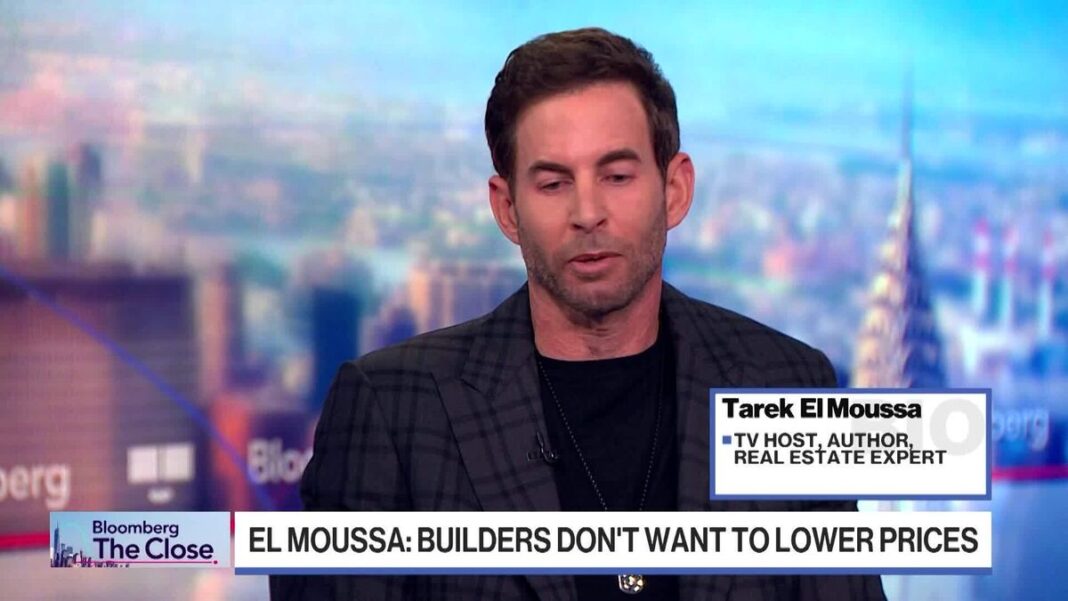The Current State of the U.S. Housing Market
Tarek El Moussa, well-known TV host and expert in real estate, has recently voiced alarming insights about the U.S. housing market. During an appearance on Bloomberg’s “The Close,” he articulated the pressing issue of soaring housing demand amid a backdrop of unaffordable prices. This nuanced discussion sheds light on a complex situation that many Americans are navigating today.
The Housing Demand Dilemma
El Moussa highlights a significant trend: the demand for housing is increasing, primarily because many potential buyers find themselves unable to afford homes. This dilemma strikes at the core of home ownership aspirations in America, where owning a home has traditionally been seen as a rite of passage and an achievement of success. Yet, with prices rising faster than wages, more people are being priced out of the market, leading to a paradox where demand remains high even as affordability plummets.
The Affordability Crisis
The affordability crisis is not just a fleeting concern; it represents one of the most significant challenges within the housing market in recent history. El Moussa points out that current conditions have created an environment in which prospective homeowners are often left to explore alternative options, such as renting or seeking out smaller, less desirable properties. This shift not only affects individual families but also reshapes entire communities, as housing affordability dictates demographic trends and economic stability.
Influencing Factors
Several factors are contributing to this historical unaffordability. From increased construction costs and supply chain disruptions to rising interest rates, the landscape is complex. El Moussa emphasizes the intricate web of these influences, suggesting that solutions will require a multifaceted approach that addresses supply issues while also considering the financial capabilities of potential buyers.
The Emotional Toll
Beyond the economic stats and figures, the emotional toll of this housing market crisis cannot be overlooked. Many families find themselves in limbo, grappling with the disappointment of not being able to secure a home. This emotional aspect often goes underreported, yet it plays a crucial role in understanding the full impact of the housing market on individuals’ lives. For many, the dream of home ownership feels increasingly elusive, causing stress and anxiety.
Market Trends and Predictions
Looking toward the future, El Moussa forecasts a continued spotlight on the housing market. As demand remains high and affordability stagnates, experts suggest watching for more innovative solutions. Whether it’s new financing models, changes in urban planning, or government interventions aimed at easing the strain on first-time buyers, the market is ripe for evolution.
The Role of Investors
El Moussa also touches on the impact of real estate investors on pricing and availability. As institutional buyers acquire residential properties, competition increases for available homes, further inflating prices. This trend raises questions about the long-term implications for both renters and buyers, as homes become increasingly viewed as investment commodities rather than personal residences.
Community Impacts
The broader implications of this housing situation extend into community health and economic vitality. When home ownership becomes inaccessible, communities may struggle to maintain stability. Schools, local businesses, and public services often rely on a stable, invested population. El Moussa’s insights encourage a crucial conversation around balancing investment opportunities with the needs of everyday families.
Final Thoughts
In summary, Tarek El Moussa’s remarks shed light on the pressing issue of housing affordability in the U.S. market. By dissecting the factors contributing to high demand and discussing the emotional and community impacts, he emphasizes that the ongoing challenges require thoughtful solutions and collective action. As America grapples with one of its most unaffordable housing markets in history, it becomes increasingly essential to foster dialogues that prioritize accessibility and sustainability for all.



